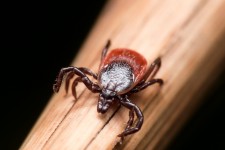For years, scientists have considered the spiral-shaped bacterium Borrelia burgorferi the only microbe that causes tick-borne Lyme disease in the United States. But now a team of Mayo Clinic scientists have identified another Lyme disease culprit.
In the recent study, pathologist Dr. Bobbi Pritt and her colleagues in Minnesota tested over 100,000 specimens from individuals infected with Lyme disease between 2003 and 2014. They found that six samples contained DNA from a new species, confirming the discovery.
They plan to name the new species Borrelia mayonii, after founder of the Mayo Clinic, Dr. William Mayo.
Borrelia mayonii, which according to Dr. Pritt's team, causes more serious symptoms than Borrelia burgorferi. These symptoms include vomiting, and scattered, spotty rashes, unlike the bulls-eye rash typically associated with Lyme disease. Three of the six patients infected with the new species' bacteria also displayed neurological problems, while two were hospitalized. Found in the country's upper midwest, the new bacterium is much more rare than Borrelia burgorferi.
This is not the first time scientists have thought they discovered new Lyme-causing bacteria. "Other Borrelia species have [in the past] been implicated," Richard Ostfeld, disease ecologist at the Cary Institue of Ecosystem Studies, speaking to Scientific American.
The difference, according to Dr. Pritt, is that the previous suspects were not shown to cause infections. Evidence must exist, Pritt says, that the bacteria are "alive or responsible for the patient's symptoms."
Pritt's team found that the Borrelia mayonii were indeed alive upon discovery. They still must prove, however, that the bacteria caused the symptoms. Pritt admits that "those definitive studies have not yet been done," but that such studies will be conducted in the future.


